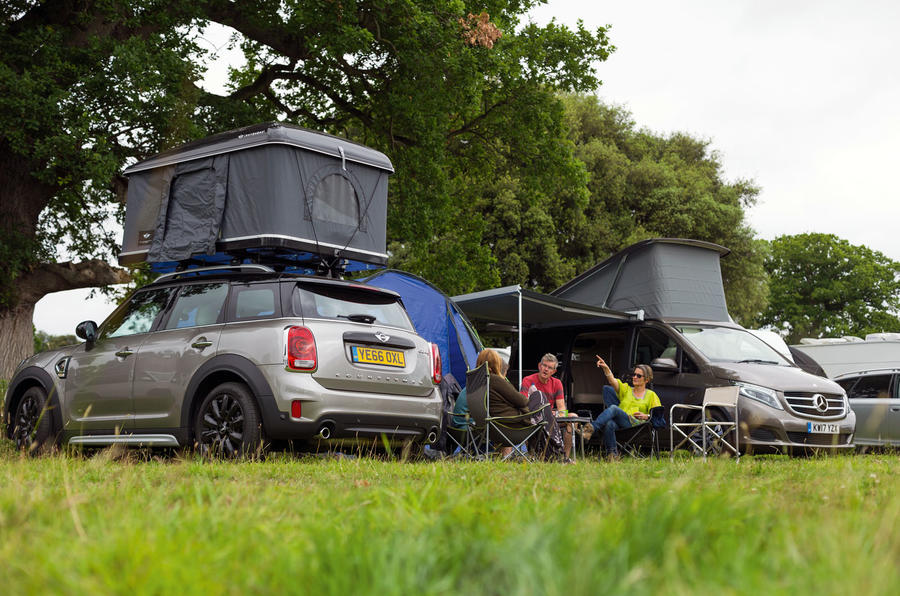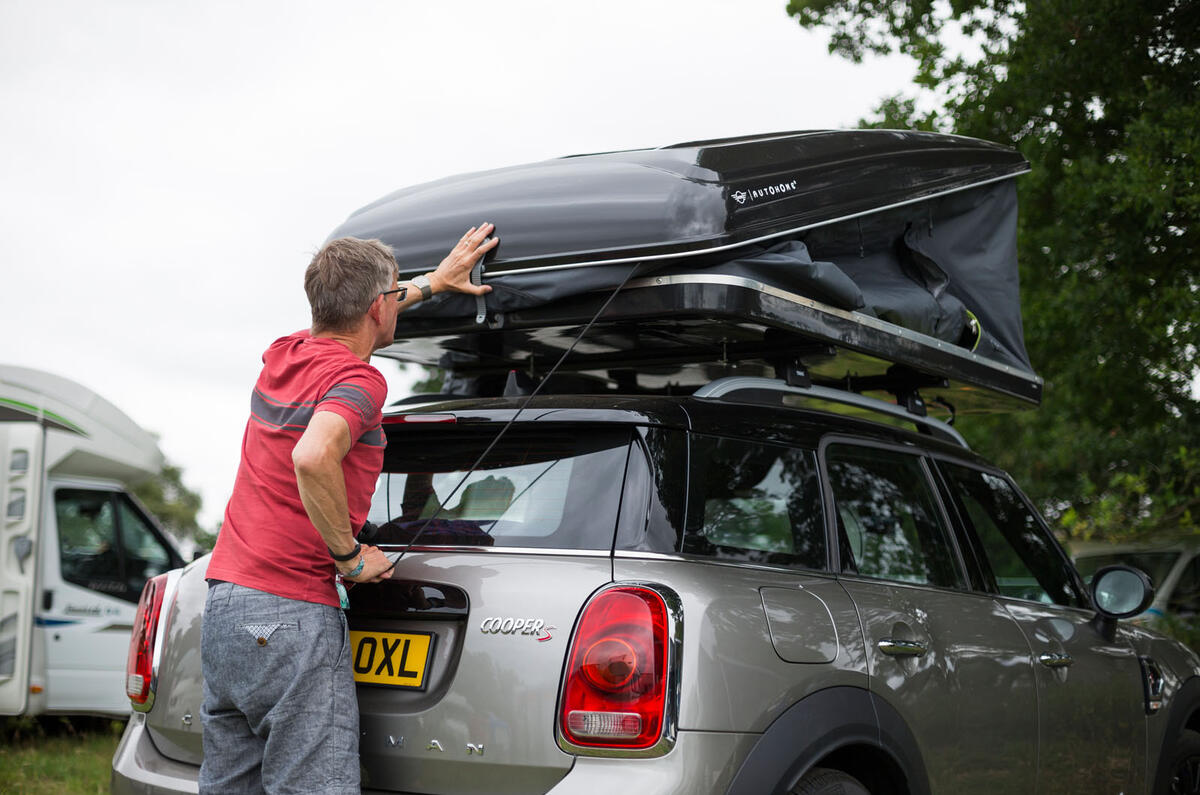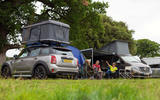This is elevated living of a different kind. Not living in a high-end house, or decamping to a five-star hotel, but living several feet above the ground and beneath a roof, in the dry, with light and bedding.
That might not sound much, but it is when you’re about to spend the night in a field, having arrived by car. For many, the next step will be a romantic but potentially miserable wrestle with a tent. More luxurious, if less adventurous, is to arrive in a vehicle that doubles as your accommodation.
It’s two of the latest of these self-contained, wheeled shelters that we plan to test by taking them to the Latitude music festival in Henham, Suffolk. One is a Mini Countryman carrying a tent in a roof box. The other is the Mercedes Marco Polo campervan, which provides rather more in the way of amenities.
For almost as long as the car has existed, people have used it as a device of escape. Escape from the drudge of work, escape from the same old scenery, escape to a lover’s arms and escape to a dreamed-of holiday destination. Once the piston engine had become powerful enough to haul a car, its occupants and a bit of luggage, it wasn’t long before the idea of combining a car with a compact house, in emulation of a snail, took hold. The first of these is thought to have been the 1910 Pierce-Arrow Touring Landau. Motorhomes and campervans have been around for a good century, almost as long as the option of piling a tent into a car and pitching up for a scenic adventure.

Campervans have got better over the decades and the Marco Polo is Mercedes’ latest device for providing instant overnight accommodation. Tents have improved, too, Mini’s ingenious glassfibre box enabling roof-top accommodation for two. It’s not cheap, though: £2762 is plenty for a compressible rectangular enclosure and mattress. To this you must add the price of a Countryman, of course, and our range-topping £36,610 Cooper S All4 Countryman takes the total to £39,372. A base Countryman costs £22,625 and pairing the tent with this would substantially undercut our Marco Polo.


















































Join the debate
Add your comment
With the size the mini is now
Too heavy for the roof !
I think that 200kg would be the limit to the Mini's roof bars. Two large people 15 stone plus would dent the roof and their wallets !
Roof bars weight limit?
I'm sure the Mini manual says 75Kg max load for the roof. Even if this doesn't apply when static I'm not sure 2 fat lads would do it much good.....